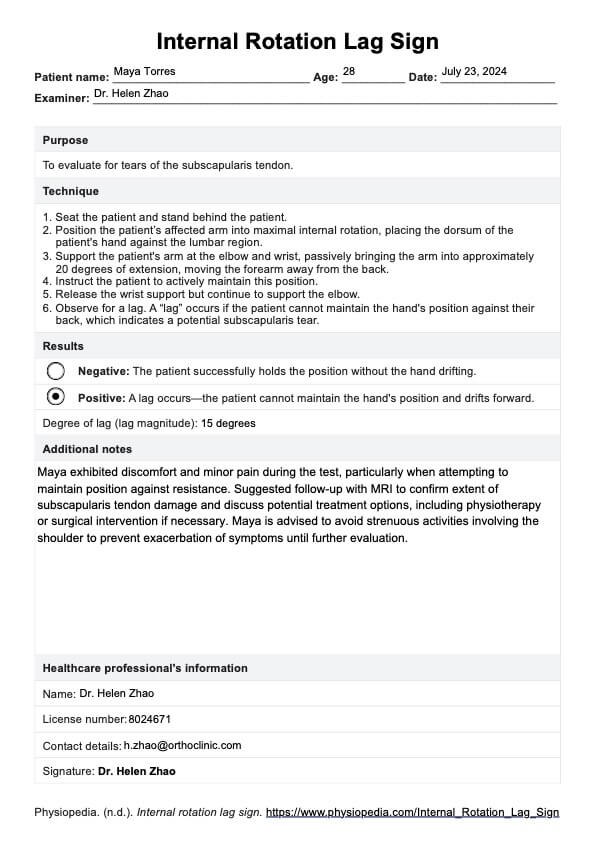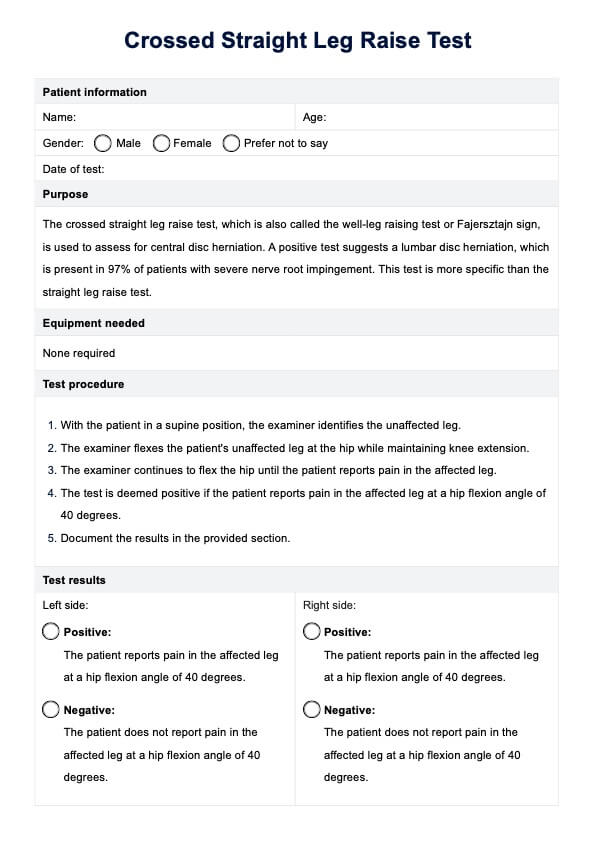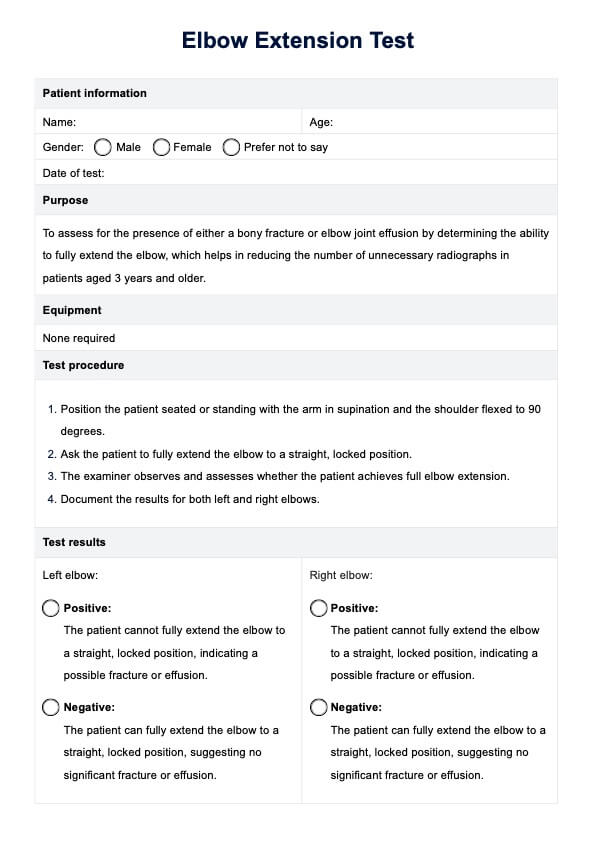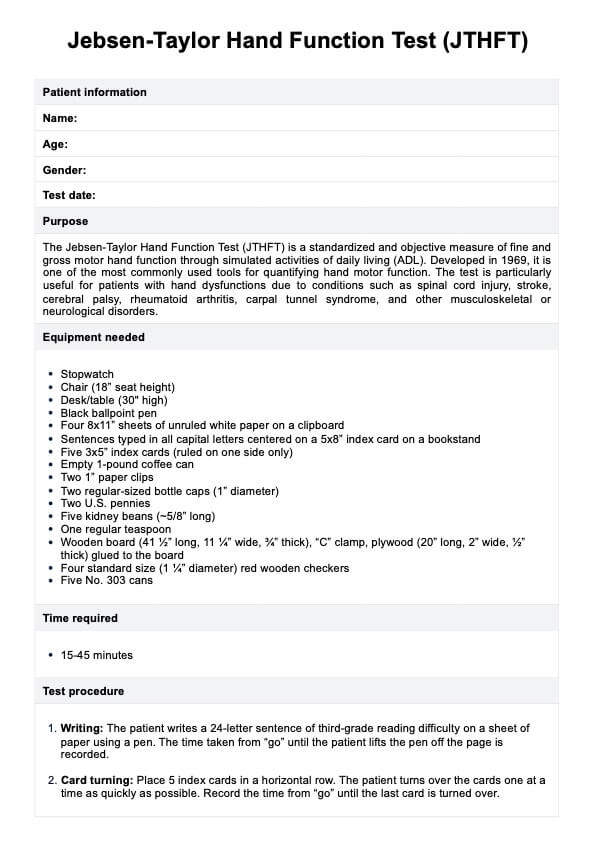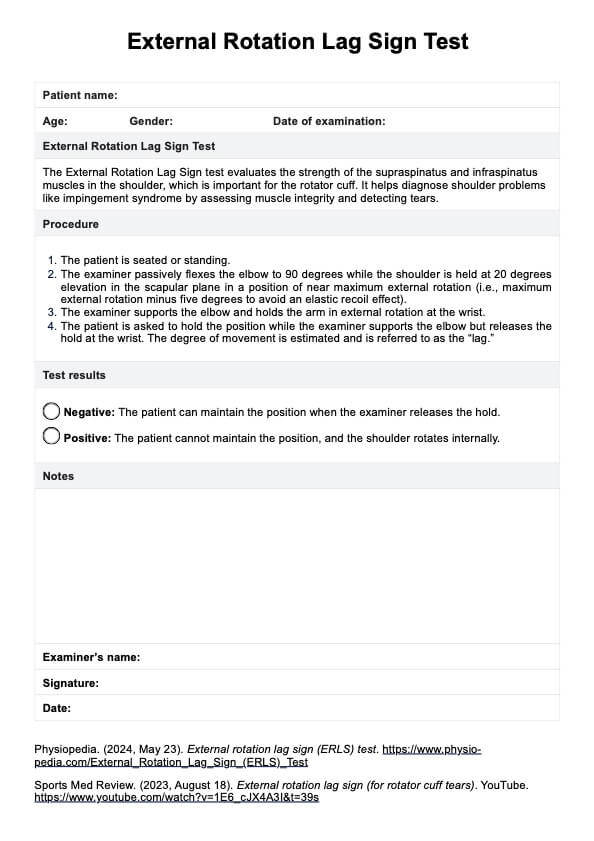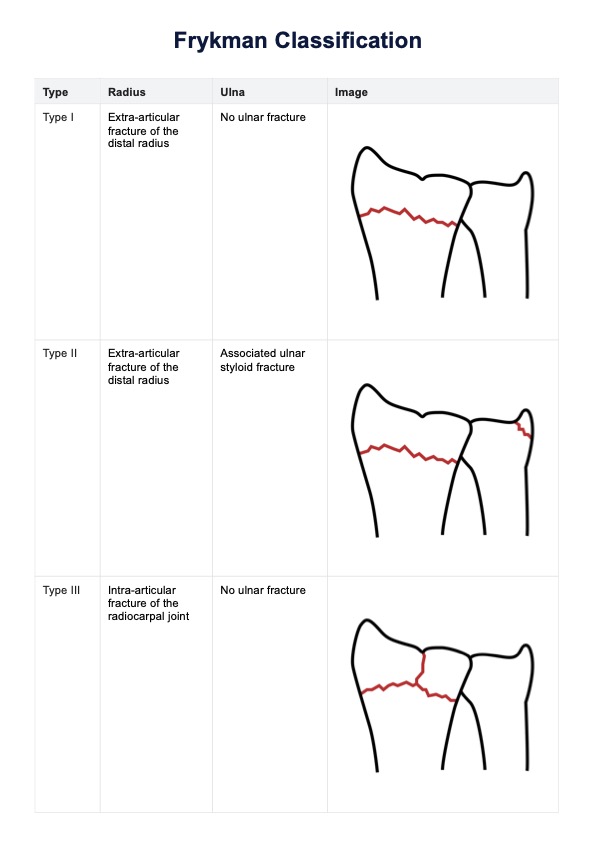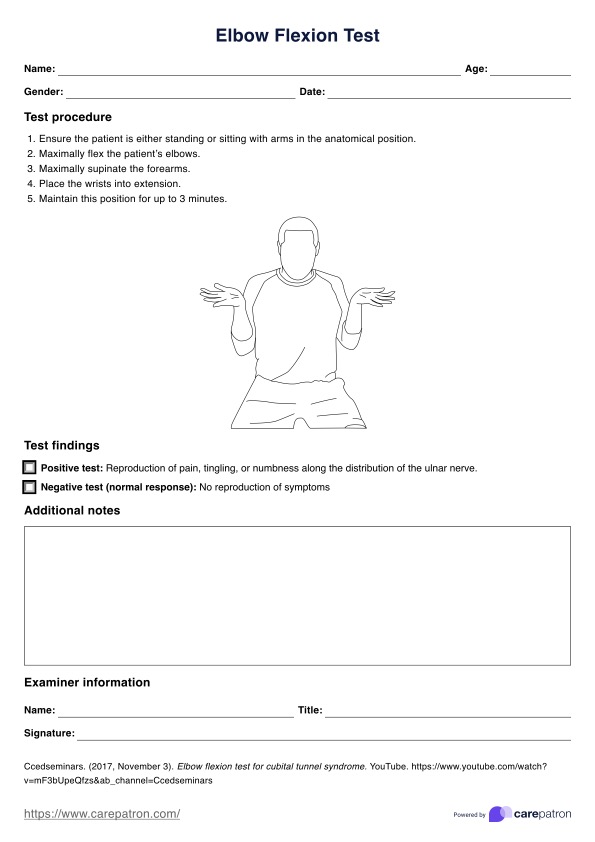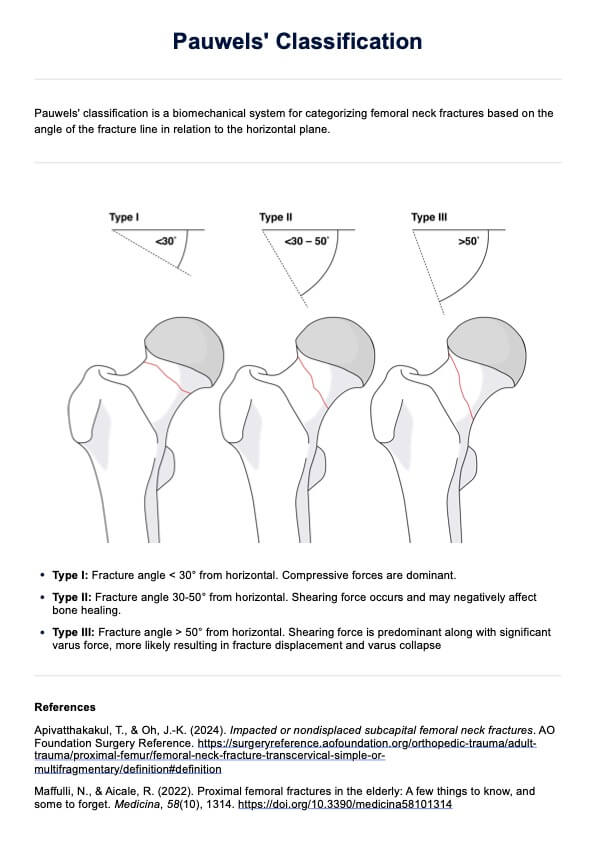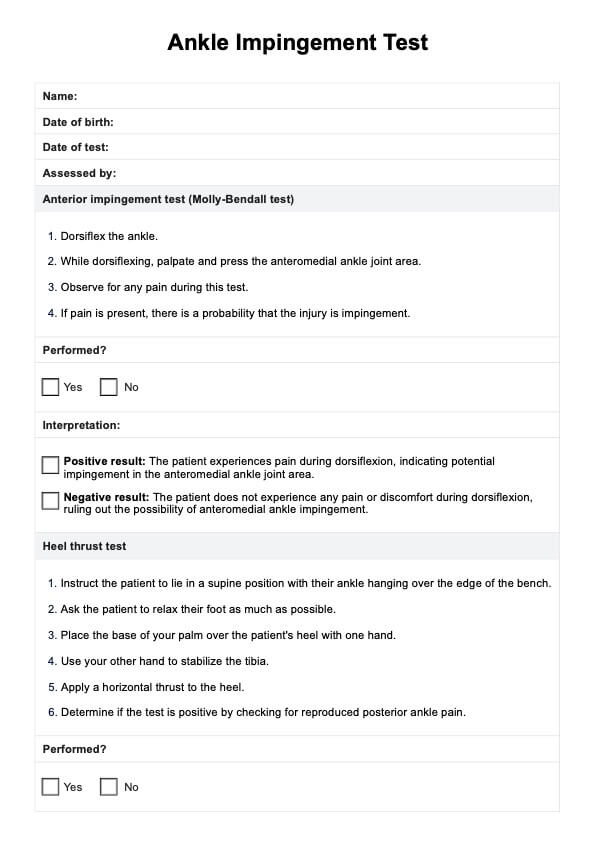Internal Rotation Lag Sign
Discover the Internal Rotation Lag Sign Test, a vital tool for diagnosing rotator cuff injuries and ensuring effective shoulder joint assessments.


What are rotator cuff tears?
Rotator cuff rupture refers to injuries to the group of muscles and tendons surrounding the shoulder joint, known as the rotator cuff muscles. These include the following:
- Supraspinatus
- Infraspinatus
- Teres minor
- Subscapularis tendon
Some examples of rotator cuff tears include rotator cuff rupture and subscapularis tendon tears. These tears can range from partial to full thickness tear and significantly affect shoulder function.
Risk factors and symptoms
Risk factors include repetitive overhead motions common in sports or certain occupations, acute injuries from falls or direct blows, and progressive wear and tear associated with aging. Having a family history of rotator cuff problems also contributes to the likelihood of rotator cuff rupture. Symptoms typically include persistent shoulder pain, especially at night or when lifting objects, weakness in the affected arm side, and limited shoulder movement. People might notice a crackling sensation when moving the shoulder in certain ways.
How to diagnose rotator cuff tears
Diagnosing rotator cuff tears involves a clinical diagnosis that begins with a detailed medical history and physical examination and screening, where doctors assess pain levels, range of motion, and muscle strength. Imaging tests play a crucial role in diagnosing rotator cuff, with ultrasound and magnetic resonance imaging (MRI) commonly used to visualize the extent of the tear and the condition of surrounding tissues.
Internal Rotation Lag Sign Template
Internal Rotation Lag Sign Example
What is the Internal Rotation Lag Sign test?
The Internal Rotation Lag Sign test, often simply referred to as the rotation lag sign, is a specialized clinical evaluation used to diagnose potential injuries to the subscapularis tendon, a key component of the rotator cuff in the shoulder (Hertel et al., 1996). This test boasts of very high sensitivity of 100% and a high specificity of 84% (Miller et al., 2008), making it a reliable test despite it being inadequate for conclusively diagnosing full-thickness rotator cuff tears.
How to conduct the Internal Rotation Lag Sign test?
To properly administer this test, position the patient’s arm to achieve maximal internal rotation and follow these steps:
- Position the patient: Have the patient seated. Position their arm so the elbow is bent at 90 degrees with the arm by their side and the elbow pointing backward.
- Internally rotate the arm: The examiner should then passively move the patient’s forearm behind their back, aiming to place the dorsum of the hand in the middle of the back at the lumbar spine level.
- Release and observe: Ask the patient to maintain this position as you slowly release support. Observe if the arm can stay in place without moving away from the back.
What are the possible results and interpretations?
A brief explanation of the test results includes:
- Positive test: If the patient cannot maintain the hand's position and drifts forward, it indicates a positive lag sign. This result suggests a tear or significant weakness in the subscapularis tendon.
- Negative test: If the patient successfully holds the position without the hand drifting, the test is negative, indicating no significant injury or weakness in the subscapularis tendon.
These results should be integrated with other clinical findings and imaging studies to diagnose and manage potential shoulder injuries accurately.
How does our internal rotation lag test template work?
Utilizing our internal rotation lag test template facilitates a structured approach to assessing the integrity of the subscapularis tendon, which is vital for diagnosing potential shoulder injuries. Here's how to effectively use the template:
Step 1: Download the template
Begin by downloading the internal rotation lag test template from our website. This will ensure you have the correct format and guidelines for conducting the test accurately.
Step 2: Fill in patient information
Once the template is downloaded, enter all relevant patient information, such as name, age, and test date. Accurate record-keeping starts with detailed patient data.
Step 3: Conduct the test
To perform the test, follow the step-by-step instructions provided in the template. This includes positioning the patient properly, executing the movements required for the test, and observing the patient's ability to maintain the position without support.
Step 4: Record the results
Use the template to document the test results. Note if there is a lag when the wrist support is released and measure the degree of lag, if present. This will help determine the extent of the potential injury.
Step 5: Finalize and store the record
Complete the assessment by filling in any additional notes and the healthcare professional's information. Ensure that all fields are filled accurately to maintain a comprehensive record. Store the completed template securely for future reference or follow-up assessments.
What are the next steps?
After performing the internal rotation lag test and determining lag signs or the presence of a subscapularis tendon tear, the following steps are recommended for further evaluation and management:
Step 1: Confirmatory diagnostics
Arrange for imaging studies such as MRI or ultrasound to confirm the diagnostic accuracy of the results and assess the extent of the injury. These imaging techniques provide a detailed view of the soft tissues, helping to confirm the initial findings of the clinical test.
Step 2: Consultation with a specialist
Refer the patient to an orthopedic surgeon or a sports medicine specialist who can provide a more detailed assessment and discuss potential treatment options based on the patient's hand and the severity of the injury.
Step 3: Physical therapy
Initiate physical therapy focused on strengthening the shoulder muscles and improving range of motion. This can often help manage symptoms and improve functional outcomes, especially in partial-thickness tears.
Step 4: Medication
Consider anti-inflammatory medications to reduce pain and swelling. These can be helpful in managing symptoms, particularly in the initial stages of treatment.
Step 5: Follow-up and monitoring
Schedule regular follow-up appointments to monitor the patient's progress. Adjust the treatment plan based on the patient’s response to therapy and any changes in symptoms.
References
Hertel, R., Ballmer, F. T., Lambert, S. M., & Gerber, Ch. (1996). Lag signs in the diagnosis of rotator cuff rupture. Journal of Shoulder and Elbow Surgery, 5(4), 307–313. https://doi.org/10.1016/S1058-2746(96)80058-9
Miller, C. A., Forrester, G. A., & Lewis, J. S. (2008). The validity of the lag signs in diagnosing full-thickness tears of the rotator cuff: A preliminary investigation. Archives of Physical Medicine and Rehabilitation, 89(6), 1162–1168. https://doi.org/10.1016/j.apmr.2007.10.046
Commonly asked questions
Partial-thickness tears of the rotator cuff damage some but not all layers of the tendon tissue. In contrast, full-thickness tears extend through all layers of the tendon, often leading to a complete separation of the tendon from the bone.
The sensitivity of the Internal Rotation Lag Sign is high according to research published by Miller, Forrester, and Lewis in 2008, making it reliable for detecting significant injuries to the subscapularis muscle tendon but less effective for identifying mild or partial-thickness tears.
Internal rotation limitations often include pain and decreased range of motion due to stiff or painful shoulder or joints, rotator cuff injuries, or post-surgical changes. These can hinder daily activities and reduce overall shoulder function.



